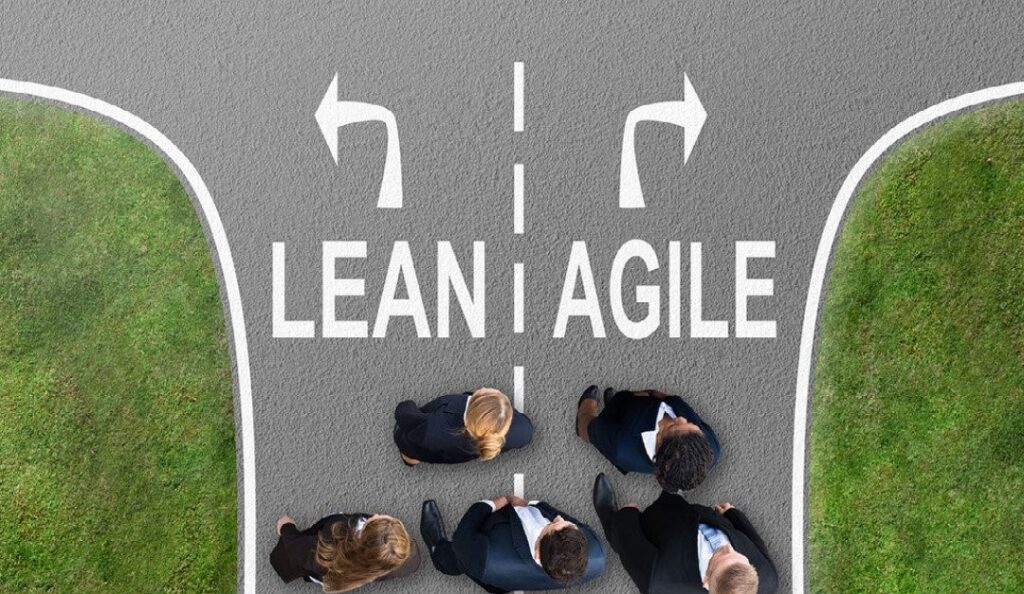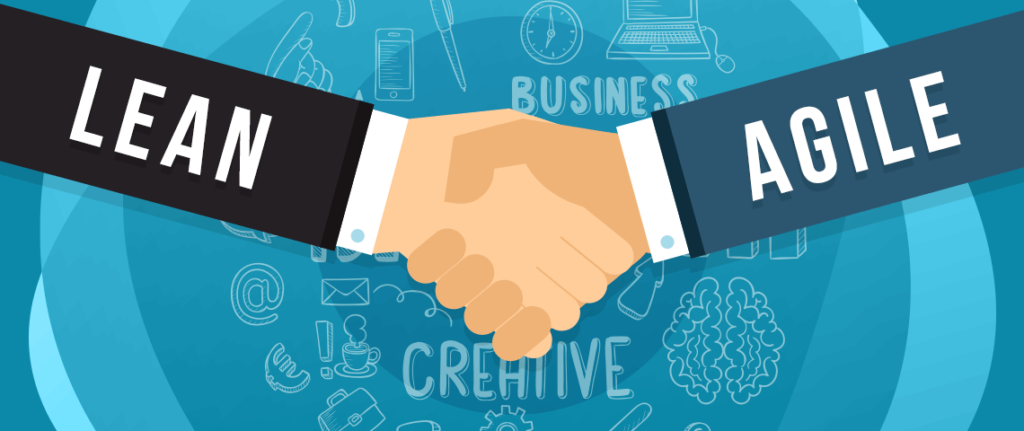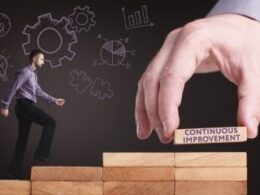Lean or Agile in Management?
As companies face increasing pressure to perform, they are turning to lean management and agile methodologies to boost their results. These two approaches have become popular options for achieving long-lasting improvement, and by combining them, companies can create a powerful system that maximises their impact.
Do they fit together?
The rise of Industry 4.0 technologies has brought about breakthroughs in cost, convenience, and customisation, which have set the bar higher for companies. However, this has also meant that businesses need to continually adapt to stay competitive. The Covid-19 pandemic has made it even more challenging for organisations to make lasting changes.
Despite these challenges, many companies have successfully integrated lean management and agile methodologies into their operations. Rather than choosing between the two, they have found that combining these methods can be very effective. By using the best tools and ways of working from each approach, companies can create a customised solution that meets their unique needs more quickly and completely than ever before.
The key to success lies in thoughtful design. By carefully selecting the most effective elements of each methodology and integrating them in a way that supports the company’s overall goals, organisations can achieve lasting performance improvement. This may involve using Industry 4.0 technologies to speed up their transformation or focusing on specific areas of their business that need improvement.
Ultimately, the best-of-both approach allows companies to create a system that is greater than the sum of its parts. By leveraging the strengths of lean management and agile methodologies in a thoughtful and strategic way, companies can achieve lasting success in today’s fast-paced and ever-changing business landscape.

Lean vs Agile
Lean management has been around for over 70 years and has been a valuable tool for organisations seeking to create value. It initially started in the manufacturing industry with the Toyota Production System but has since expanded into service operations, departments, and functions in various organisations worldwide. Lean organisations focus on identifying and eliminating activities that do not add value to the customer or end-user. This results in improved cost control, product quality, customer satisfaction, and employee engagement. By emphasising continuous improvement and flexible working processes, organisations encourage all employees to contribute new ideas and suggestions.
Agile, on the other hand, is a more recent development that originated in software development in the 1990s and gained momentum after the release of the Agile Manifesto in 2001. It has since expanded into other industries, such as telecommunications and banking, and even heavy industries like mining and oil and gas. Agile approaches are quicker and more flexible than traditional product or service development processes. Instead of a highly sequential and time-consuming approach, Agile models focus on iterative development, with the aim of getting a new product or service prototype into the hands of customers as soon as possible.

Lean Plus Agile
Some believe that Lean management and Agile are incompatible, but this is not true. Both systems have been successful across a range of environments, and both share similar objectives, such as delivering value efficiently to customers, discovering better ways of working, connecting strategy and goals transparently, and enabling people to contribute and lead to their fullest potential. These objectives apply to any team or activity across an organisation, and both Lean management and Agile provide team models, ways of working, and toolkits that can be deployed in various ways to achieve them.
Lean management and Agile rely on team models to deliver results. Lean management introduces the concept of work cells where teams work together to complete steps that were previously separate. On the other hand, Agile focuses on cross-functional teams and flow-to-work pools to deliver value. Although there are similarities between the two systems, such as the use of visual management tools, there are differences in their approaches.
Lean management includes integrated management practices and continuous improvement through kaizen, while Agile focuses on teamwork management through “scrum” and extreme programming. Both systems offer a variety of team models, ways of working, and tools to suit the nature of the activity being conducted.
The Value of Both
Lean management and agile are both powerful systems, and companies don’t need to choose between them as either-or options. Rather, companies can apply this all-of-the-above approach, choose the tools and applications that are most relevant for their needs, and thus generate even greater improvements across the entire organisation.







